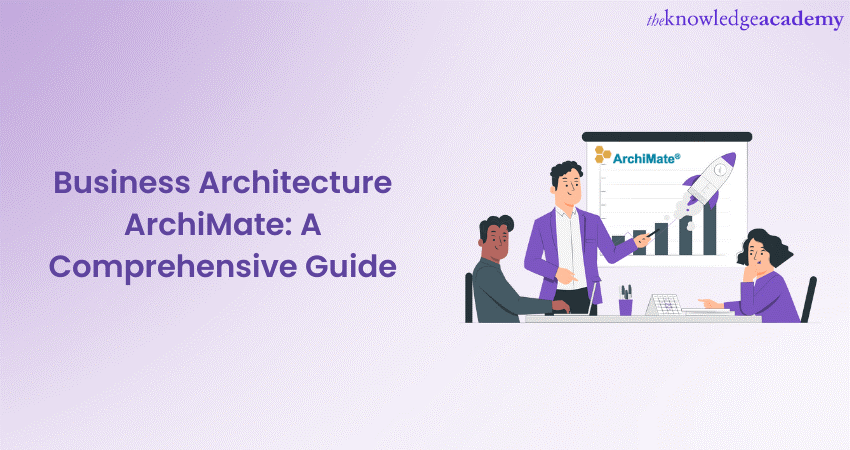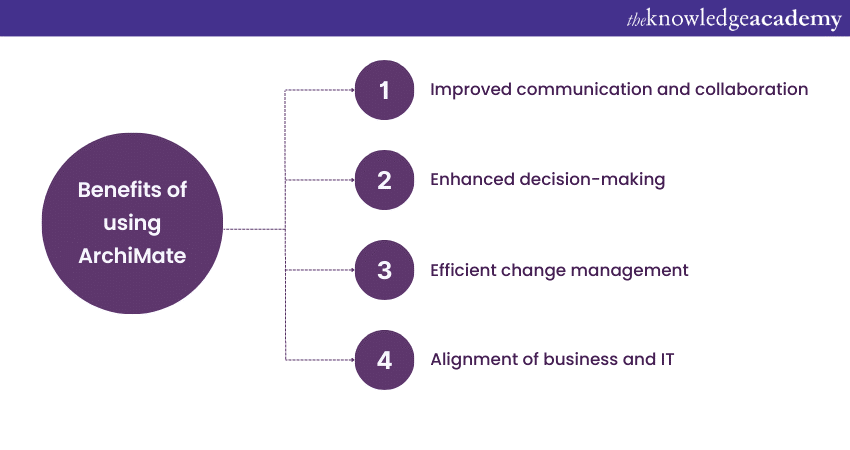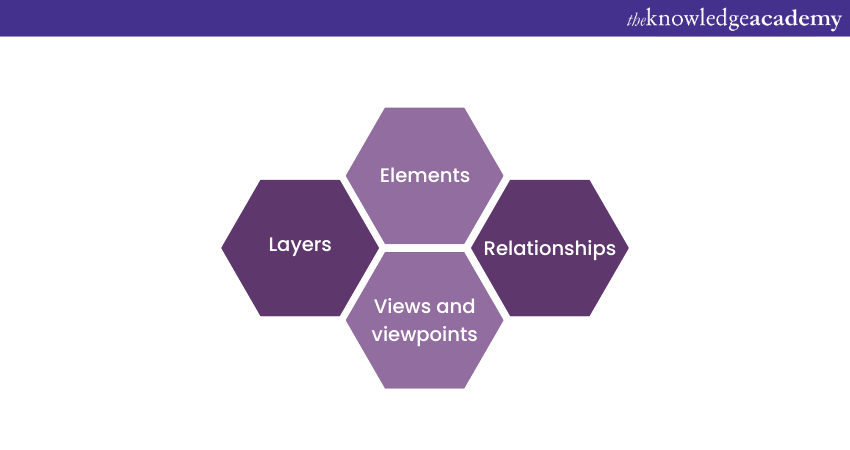We may not have the course you’re looking for. If you enquire or give us a call on 01344203999 and speak to our training experts, we may still be able to help with your training requirements.
Training Outcomes Within Your Budget!
We ensure quality, budget-alignment, and timely delivery by our expert instructors.

Business Architecture ArchiMate is a modelling language especially designed for representing and analysing the business aspects of an organisation. It provides a comprehensive framework for visualising and documenting various business architecture elements, including processes, roles, functions, and organisational structures. It enables clear communication and collaboration among stakeholders, facilitating strategic decision-making and alignment of business goals with its standardised notations and semantics. It helps organisations analyse their current state, design future state, and identify opportunities for improvement. Enhance your understanding of Business Architecture ArchiMate by reading this comprehensive guide and prepare to excel in this domain.
Table of Contents
1) What is Business Architecture?
2) What is ArchiMate?
3) What are the benefits of using ArchiMate?
4) What are some key concepts of ArchiMate?
5) Conclusion
What is Business Architecture?
Business Architecture is a discipline that focuses on understanding and modelling a business's structure, processes, capabilities, and goals. It provides a blueprint or framework for organising and aligning various aspects of an organisation, including its strategy, operations, technology, and people. Business Architecture enables a holistic business view, allowing stakeholders to analyse and optimise its components and relationships. It helps identify areas for improvement, streamline processes, and enhance overall efficiency. It bridges the gap between business strategy and execution, thereby guiding decision-making, facilitating change management, and supporting the organisation in achieving its objectives.

What is ArchiMate?
At its core, ArchiMate bridges the business and IT domains, enabling organisations to align their business strategies with their technology capabilities. It allows architects to depict and understand the relationships and dependencies between different elements of the enterprise, such as business processes, organisational structure, information flows, applications, and technology infrastructure.
It provides a common language for stakeholders from different disciplines and departments. It offers a rich set of concepts, relationships, and viewpoints that allow architects to represent various business elements' structure, behaviour, and interdependencies. This common language fosters effective communication, collaboration, and shared understanding among stakeholders, ensuring everyone works towards the same goals.
It enables organisations to analyse and evaluate their business architecture more effectively. It facilitates the identification of gaps, redundancies, and opportunities for improvement in the architecture. Architects can explore different scenarios and assess their impact, aiding in informed decision-making.
Unlock the power of ArchiMate with our ArchiMate® 3 Training Course: Level 1 – sign up now!
What are the benefits of using ArchiMate?

Implementing ArchiMate in Business Architecture brings several benefits:
a) Improved communication and collaboration: It offers a common language for stakeholders across different departments and disciplines, enabling effective communication and collaboration. With ArchiMate diagrams, business architects can bridge the gap between business and IT stakeholders, ensuring a shared understanding of business objectives and facilitating informed decision-making.
b) Enhanced decision-making: It visualises business architecture, making it easier to analyse and evaluate different scenarios. Decision-makers can assess the impact of potential changes or investments, identify bottlenecks, and optimise processes to align with strategic goals. ArchiMate's rich set of relationships allows for comprehensive modelling, supporting well-informed decision-making.
c) Efficient change management: Business architects can model and analyse the impact of changes in a controlled environment by using ArchiMate. This helps organisations effectively manage change initiatives, reduce risks, and ensure smooth transitions. It identifies dependencies, potential conflicts, and process gaps, allowing for proactive planning and mitigation strategies.
d) Alignment of business and IT: ArchiMate bridges business and IT architectures, allowing organisations to align their business strategies with IT systems and applications. Business architects can use it to map business processes to IT components, identify opportunities for digital transformation, and ensure that IT investments support the organisation's objectives.
Take your ArchiMate skills to the next level with our ArchiMate® 3 Training Course: Level 2 – sign up today!
What are some key concepts of ArchiMate?

To effectively use Business Architecture ArchiMate, it is essential to understand its key concepts:
a) Elements: It consists of business, application, and technology elements. Each element represents a distinct aspect of the business architecture and its relationships with other elements. Examples of ArchiMate elements include organisation, business process, product, application service, and infrastructure service.
b) Relationships: These depict the associations, dependencies, and interactions between elements. They help illustrate how different elements contribute to the overall business architecture. Its relationships include composition, aggregation, specialisation, association, flow, and trigger.
c) Views and viewpoints: It allows the creation of different views and viewpoints to cater to various stakeholders' perspectives. Views focus on specific aspects of business architecture, while viewpoints define the conventions and rules for constructing and interpreting those views. Examples of viewpoints in ArchiMate include the business process, application cooperation, and technology.
d) Layers: It organises business architecture into layers, each representing a specific aspect of the organisation. The core layers in ArchiMate are the business, application, and technology layers. This layering approach helps in the modular design and analysis of the business architecture.
Joun our ArchiMate® 3 Training Course to learn the basics of ArchiMate modelling languages.
Conclusion
In this blog, we explored the key concepts of Business Architecture ArchiMate, discussed the benefits and challenges of using it in Business Architecture, and provided best practices for its implementation. By following these guidelines and leveraging its tools and techniques, organisations can unlock the full potential of their business architecture and drive success.
Enhance your enterprise architecture expertise with our comprehensive ArchiMate® 3 Training courses – register now!
Frequently Asked Questions
Upcoming Business Improvement Resources Batches & Dates
Date
 ArchiMate® 3 Training Course
ArchiMate® 3 Training Course
Tue 28th May 2024
Mon 1st Jul 2024
Mon 28th Oct 2024
Thu 2nd Jan 2025
Thu 3rd Apr 2025
Thu 31st Jul 2025
Thu 6th Nov 2025







 Top Rated Course
Top Rated Course


 If you wish to make any changes to your course, please
If you wish to make any changes to your course, please


